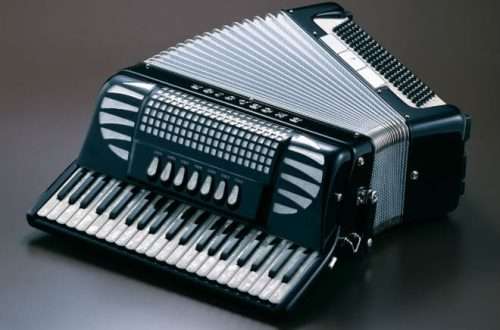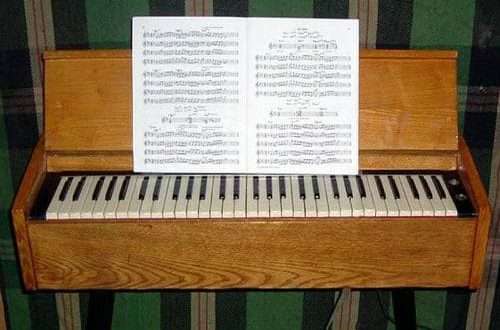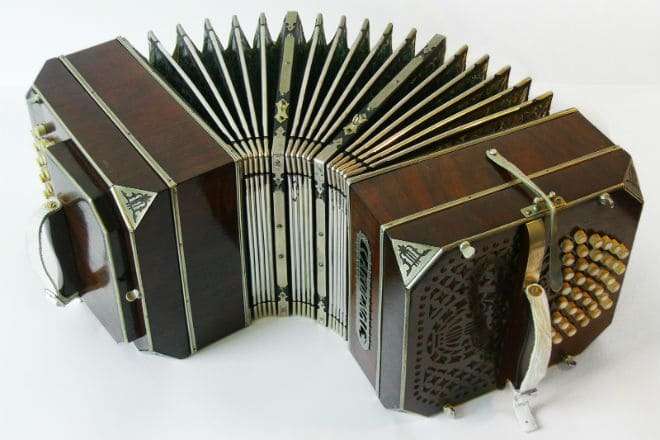
Bandoneon: what is it, composition, sound, history of the instrument
Anyone who has ever heard the sounds of Argentine tango will never confuse them with anything – its piercing, dramatic melody is easily recognizable and unique. She acquired such a sound thanks to the bandoneon, a unique musical instrument with its own character and interesting history.
What is a bandoneon
The bandoneon is a reed-keyboard instrument, a type of hand harmonica. Although it is most popular in Argentina, its origin is German. And before becoming a symbol of the Argentine tango and finding its current form, he had to endure many changes.

History of the tool
In the 30s of the XNUMXth century, a harmonica appeared in Germany, which has a square shape with five keys on each side. It was designed by music master Karl Friedrich Uhlig. While visiting Vienna, Uhlig studied the accordion, and inspired by it, on his return created the German concertina. It was an improved version of his square harmonica.
In the 40s of the same century, the concertina fell into the hands of the musician Heinrich Banda, who already made his own changes to it – the sequence of the extracted sounds, as well as the arrangement of the keys on the keyboard, which became vertical. The instrument was named the bandoneon in honor of its creator. Since 1846, he began to be sold in Bandy’s musical instrument store.
The first models of bandoneons were much simpler than modern ones, they had 44 or 56 tones. Initially, they were used as an alternative to the organ for worship, until four decades later the instrument was accidentally brought to Argentina – a German sailor changed it either for a bottle of whiskey, or for clothes and food.
Once on another continent, the bandoneon gained new life and meaning. His poignant sounds fit perfectly into the melody of the Argentine tango – no other instrument gave the same effect. The first batch of bandoneons arrived in the capital of Argentina at the end of the XNUMXth century; soon they began to sound in tango orchestras.
A new wave of interest hit the instrument already in the second half of the XNUMXth century, thanks to the world-famous composer and the brightest bandoneonist Astor Piazzolla. With his light and talented hand, bandoneon and Argentine tango have gained a new sound and popularity all over the world.
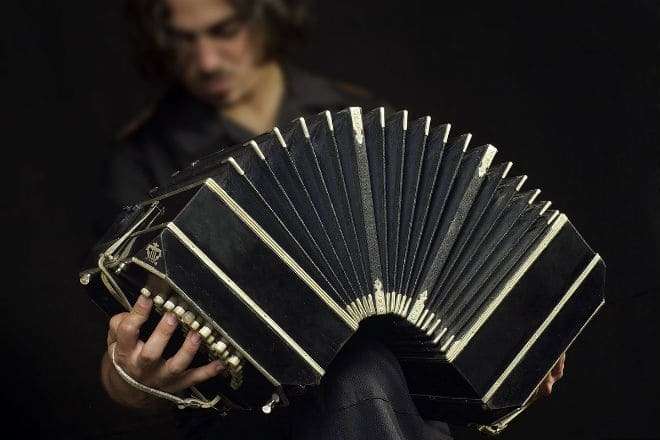
Varieties
The main difference between bandoneons is the number of tones, their range is from 106 to 148. The most common 144-tone instrument is considered the standard. In order to learn how to play the instrument, a 110-tone bandoneon is more suitable.
There are also specialized and hybrid varieties:
- with pipes;
- chromatiphone (with inverted key layout);
- c-system, which looks like a Russian harmonica;
- with a layout, like on a piano, and others.
Bandoneon device
This is a reed musical instrument of a quadrangular shape with bevelled edges. It weighs about five kilograms and measures 22*22*40 cm. The fur of the bandoneon is multi-folded and has two frames, on top of which there are rings: the ends of the lace are attached to them, which supports the instrument.
The keyboard is located in a vertical direction, the buttons are placed in five rows. The sound is extracted due to the vibrations of the metal reeds during the passage of air pumped by the bellows. Interestingly, when changing the movement of the fur, two different notes are emitted, that is, there are twice as many sounds as there are buttons on the keyboard.
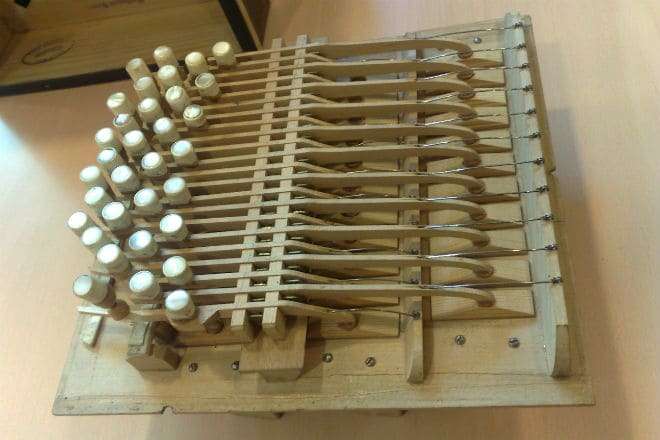
When playing, the hands are passed under the wrist straps located on both sides. The Play involves four fingers of both hands, and the thumb of the right hand is on the air valve lever – it regulates the air supply.
Where is the tool used
As already mentioned, the bandoneon is most popular in Argentina, where it has long been considered a national instrument – it is made there for three and even four voices. Having German roots, the bandoneon is also popular in Germany, where it is taught in folk music circles.
But thanks to its compact size, unique sound and the growing interest in tango, the bandoneon is in demand not only in these two countries, but throughout the world. It sounds solo, in an ensemble, in tango orchestras – listening to this instrument is a pleasure. There are also many schools and learning aids.
The most famous bandoneonists: Anibal Troilo, Daniel Binelli, Juan José Mosalini and others. But the “Great Astor” is at the highest level: what is only worth his famous “Libertango” – a piercing melody where dreary notes are replaced by explosive chords. It seems that life itself sounds in it, forcing you to dream about the impossible and believe in the fulfillment of this dream.



